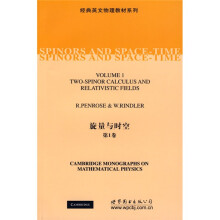Preface
1 The geometry of world-vectors and spin-vectors
1.1 M inkowski vector space
1.2 Null directions and spin transformations
1.3 Some properties of Lorentz transformations
1.4 Null flags and spin-vectors
1.5 Spinorial objects and spin structure
1.6 The geometry ofspinor operations
2 Abstract indices and spinor algebra
2.1 Motivation for abstract-index approach
2.2 The abstract-index formalism for tensor algebra
2.3 Bases
2.4 The total reflexivity of on a manifold
2.5 Spinor algebra
3 Spinors and worid-tensors
3.1 World-tensors as spinors
3.2 Null flags and complex null vectors
3.3 Symmetry operations
3.4 Tensor representation of spinor operations
3.5 Simple propositions about tensors and spinors at a point
3.6 Lorentz transformations
4 Differentiation and curvature
4.1 Manifolds
4.2 Covariant derivative
4.3 Connection-independent derivatives
4.4 Differentiation ofspinors
4.5 Differentiation ofspinor components
4.6 The curvature spinors
4.7 Spinor formulation of the Einstein-Cartan-Sciama-Kibble theory
4.8 The Weyl tensor and the BeI-Robinson tensor
4.9 Spinor form of commutators
4.10 Spinor form of the Bianchi identity
4.11 Curvature spinors and spin-coefficients
4.12 Compacted spin-coefficient formalism
4.13 Cartans method
4.14 Applications to 2-surfaces
4.15 Spin-weighted spherical harmonics
5 Fields in space-time
5.1 The electromagnetic field and its derivative operator
5.2 Einstein-Maxwell equations in spinor form
5.3 The Rainich conditions
5.4 Vector bundles
5.5 Yang-Mills fields
5.6 Conformal rescalings
5.7 Massless fields
5.8 Consistency conditions
5.9 Conformal invariance of various field quantities
5.10 Exact sets of fields
5.11 Initial data on a light cone
5.12 Explicit field integrals
Appendix: diagrammatic notation
References
Subject and author index
Index of symbols

 缺书网
缺书网 扫码进群
扫码进群





